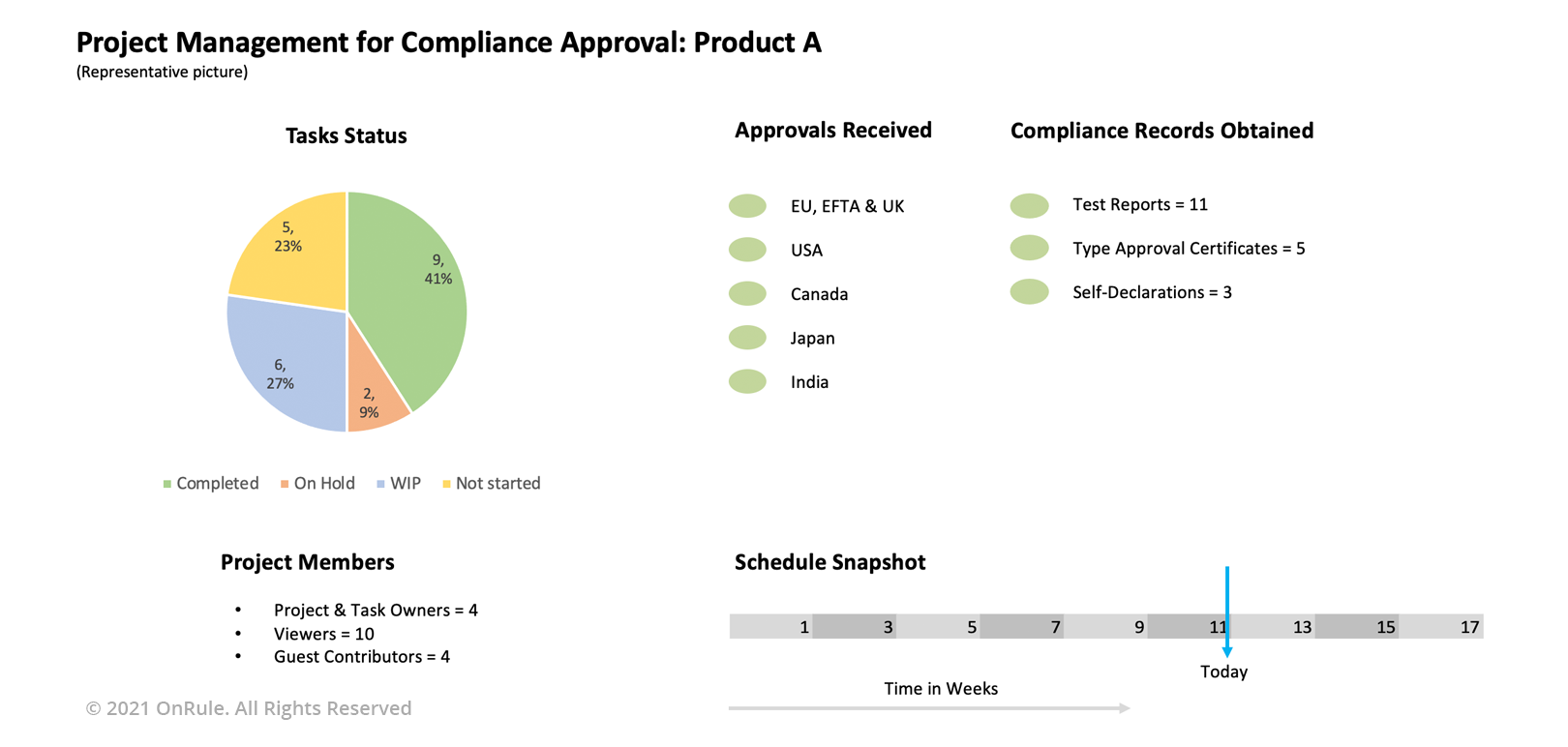Issues & Needs 6 - Managing the compliance projects and activities
By Tom Killam and Cyril Mecwan
September 14, 2021 | Series 1 / No. 10
Evolving technologies, disparate regulatory record types, specific regulatory disciplines, changing directives or regulations, and ever-changing world of technical standards – all these parameters bring a different level of complexity and nuances to the field of product regulatory compliance.
Obtaining a product regulatory approval for a new product or recertification of an existing product is a highly collaborative activity. The generic workflows and project management solutions available in the market fall short of appreciating and addressing the intricacies of the product regulatory compliance.
Background:
Managing a project to obtain product regulatory compliance for a new product requires interaction with disparate entities, functions, and people within and outside the company. For a long time now, the Compliance professional has been initiating and managing complex compliance projects and activities without proper tools at his/her disposal. Typically, the coordination with the internal design engineering team and the test labs has been manual. The methods of communication among stakeholders have been slow and error prone, leading to longer time to approval and subsequent impact on the product release date.
Issues:
The generic workflows and project management solutions available in the market fall short of appreciating and addressing the intricacies of the product regulatory compliance.
In an absence of the best of breed solution catered to the product regulatory compliance, the proper automation of compliance processes has not been accomplished.
A Compliance professional will need to create a framework of a new product compliance project and run it by her/his colleagues to ensure all tasks are captured and the project is internally approved before going live with it.
How does one gather the supporting engineering documents and share these documents with the test labs so that the product technology could be understood, and the testing needs could be accurately ascertained? Today, the Compliance professional requests the internal engineering team to provide the support documents and typically receives different documents from different engineers through emails or other company communications; then the Compliance professional shares these documents with the test labs through emails – this serial communication is lacking collaboration, which results into lost time and productivity.
Compliance approval is an important aspect of the Engineering Readiness Review (ERR) and Product Readiness Review (PRR). Therefore, the New Product Program Manager (NPPM), who is busy coordinating many responsibilities and tasks for the entire project, would like to stay abreast of the progress and status of the compliance activities without having to do a number of follow ups.
Similarly, the Product Marketing team would like to know when the compliance approvals (which is almost the last activity before a product could be released) will be obtained so that it can ascertain the launch date of the new product and prepare the channel partners and sales teams with the necessary collaterals in support of the promotional events and product launch.
The Order Commit team would like to know the launch date in order to determine the General Availability (GA) of the product so that the date and time to open the Order Entry portal could be ascertained and affirmatively announced.
For a mid-size company, many compliance projects are managed throughout the year. It would be extremely helpful to keep track of the history of the projects for the purpose of tracing back the events, to analyze, and to root cause any problems found in the field. Additionally, an ability to harness the past knowledge by using the past project(s) as a template for the new projects would result into much needed productivity gain.
Needs:
There is a need in the compliance community to have a collaborative platform to initiate and execute a compliance project while allowing the compliance ecosystem participants to participate based on their assigned roles and responsibilities. Below, we have attempted to summarize some important needs – note that this is a representative list and not a complete list:

- Create a compliance related project for testing & certification of a new product or recertification of an existing product
- Develop an upfront understanding of the product regulatory compliance deliverables by markets so that these deliverables could automatically be converted into tasks and sub-tasks. Ability to group the tasks by markets, and disciplines (Product Safety or EMC or Telecommunications or Environmental etc.)
- Ability to create a compliance project and have it reviewed and approved by other colleagues to capture all requirements prior to initiating the project
- Invite the supporting engineering team to gather the documents required by the test labs so that the test plans, test configuration, test equipment and test cases could be ascertained upfront.
- Provide a platform where various participants could be invited – both from inside the company and test lab partners etc. – that can have access and privileges based on their responsibilities as determined by the Compliance Project Manager. Assign the tasks to the owners, and provide view-only access to stakeholders who are interested in learning about the progress of the project or specific tasks.
- Provide an ability for the test lab to upload the draft of the test reports, ability of the Compliance professional to review and give her/his input in real-time, leading up to approval of the final document.
- Show a summary status of the project so that the stakeholders – Product Managers, Sales, Marketing, Engineering Program Manager, Operations, etc. - become aware of the compliance status and can proactively take care of the important follow-on business activities.
- Save the history of the project so that it could be reviewed for any references.
- Lastly, use the past projects as a template in the future so that a new project could be initiated instantly.